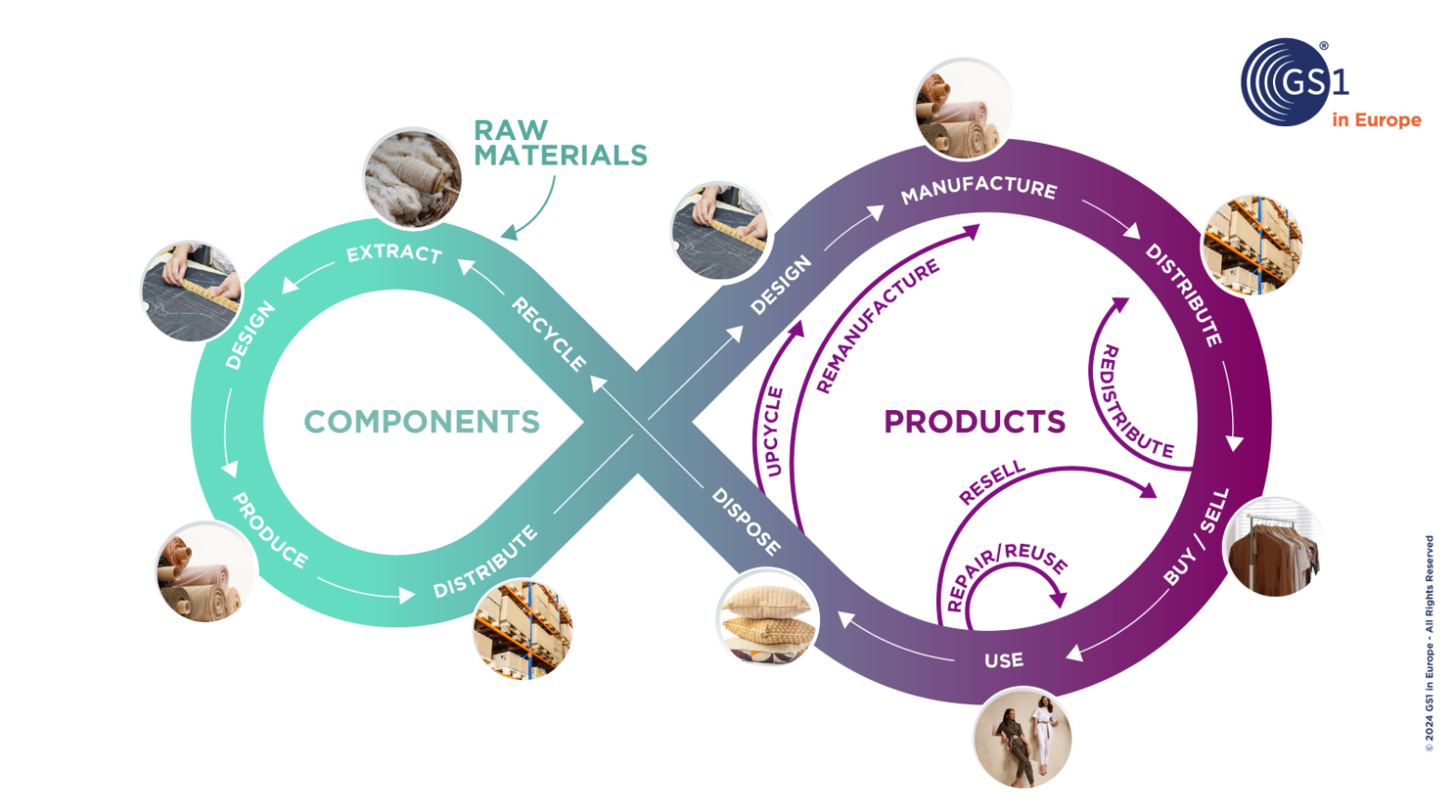What is it?
The Digital Product Passport is part of the Ecodesign for Sustainable Products Regulation (ESPR). In turn, this regulation is part of the broader European Green Deal. The purpose of this body of rules and regulations is to make Europe in to the first climate-neutral continent by 2050.
A Digital Product Passport could be compared to a travel passport for people, only this one is for physical products. The passport gathers and stores a variety of different data, such as the product’s composition, its ecological footprint, how the product can be repaired/recycled/processed, etc. The passport can then be consulted by every stakeholder in the supply chain by way of a QR code for instance. This enables consumers to make better informed purchasing decisions whilst also ensuring longer life cycle or even multiple life cycles of the product.
For whom?
The regulation applies to physical products, including their main components, and to intermediate products that are sold on the market in the European Union.
- Intermediate iron and steel products: 2026
- Textiles: 2027
- Tyres: 2027
- Furniture: 2028
- Mattresses: 2029
- Aluminium: 2027
For each of these product categories, the EU will publish detailed data requirements for the sector specific DPP. This is being done either by “delegated acts” directly linked to the ESPR regulation (a.o. for textile and electronics) or through updating the already existing sector legislation (a.o. for batteries and detergents).
Only a handful of product categories such as food, pet food/animal feeds and medical products are exempt.
What is GS1’s role?
Exchanging data is more complicated in a circular economy. Especially as there is a significantly greater number of stakeholders with whom data are to be shared than in a linear economy. This cannot be done without reliable identification keys and reliable data.
Also, as every player will be exchanging their data in a different format, this will make it almost impossible to put together a DPP. Which is why the harmonization and standardization of data is a second crucial component.

For this reason, through its standards, GS1 is working to harmonise and connect all data flows in the circular chain. This enables all stakeholders up and down the supply chain to refer to the same product using the same language, based on reliable data.



